Inanna – Prominent And Highly Honored Mesopotamian Goddess
A. Sutherland - AncientPages.com - The goddess of the ancient Sumerian city of Uruk is known as Inanna. She is frequently mentioned in academic literature.
During the early Akkadian reign in Mesopotamia (c.2334-2154 BC), Inanna was associated with Ishtar.
Goddess Inanna - Credit: Adobe Stock - roomyana
In the 2nd millennium BC, her cult spread widely among the Hurrians, Mitanni, and Phoenicians (Phoenician Astarte). Finally, in Greek mythology, the same goddess is Aphrodite.
This article uses her name, Inanna, as she was known among the Mesopotamians. Inanna was initially worshiped as a vegetation deity and later as the goddess of love, sex, erotic attraction, and patronized marital sexuality. She symbolized fertility, war, weather, and crops, but she also had many other aspects. She was highly honored, especially in Uruk's Eanna temple complex (meaning the "House of Heaven").
According to the myths of Enmerkar, Inanna was originally the goddess of Aratta, but later, Uruk, a rival of Aratta, began to enjoy her favor.
However, her cult was not so significant before the conquest of the Sargon of Akkad. During the post-Sargent era, Inanna became one of the Sumerian pantheon's most widely recognized and honored deities. People built a large number of temples dedicated to her across Mesopotamia. Thus, her cult continued to flourish until its gradual decline began between the first and sixth centuries AD, related to the emergence of Christianity. And yet, Inanna's cult was strong enough to survive in Upper Mesopotamia among Assyrians as late as the eighteenth century.
As mentioned, this Sumerian goddess had many different aspects and fulfilled a double role. On the one hand, she was the goddess of procreation; on the other, she was worshipped as a warrior goddess, an extremely war-like personality often called the "lady of armies."
Unlike other deities, Inanna personified the planet Venus, setting in the West and then rising again in the East. She could descend into the netherworld and then return to the heavens. We remember that the Egyptian god Ra could also make similar journeys, crossing the sunny sky by day in his solar barque and traveling through the underworld by night.
 Inanna receiving offerings on the Uruk Vase, circa 3200-3000 BC. Credit: Osama Shukir Muhammed Amin FRCP(Glasg) - CC BY-SA 4.0
Inanna receiving offerings on the Uruk Vase, circa 3200-3000 BC. Credit: Osama Shukir Muhammed Amin FRCP(Glasg) - CC BY-SA 4.0
The goddess's iconic statue shows her holding a ring, the so-called Inanna's knot, a sacred symbol exclusively connected with this goddess. The knot was a hook-shaped and twisted knot of reeds that symbolized the doorpost of the storehouse, a common sign of fertility and abundance. Other Inanna's symbols included the lion and the eight-pointed star, which became Ishtar's primary symbol, and the rosette.
We must refer to her different aspects to understand how important the goddess Inanna was. Inanna was the queen of the seven temples of Sumer and the queen of animals. She was depicted sitting on a sizeable earthly lion or moved on divine bulls. Among other symbols associated with her was the owl and sometimes the moon, as she was sometimes considered the daughter of Nanna, the Moon-god, and Ningal, daughter of Ningikuga, the goddess of reeds, and Enki, the god of magic, crafts, and wisdom.
Inanna Possessed Special Forces – Me
She possessed me, the special forces which earlier belonged to the god Enki. The gods gave these powers to other gods or kings-priests, who were the representatives of the gods on earth and safeguarded the continuation of civilization.
Legend says that Inanna got Enki drunk with beer and forced him to give her me. He gave her many unique gifts and strength, so she became the queen of heaven and earth. 'Me' were special forces for her because they allowed her to enter the underworld and return from there.
Aware of her extraordinary abilities, the goddess decided to extend her power and descend to the Land of the Dead. She knew that the ruler of this realm was Ereshkigal, and she hated her. She abandoned her temples in the cities and began to prepare for the journey.
Goddess Ishtar (Inanna) on an Akkadian Empire seal, 2350–2150 BC. She is equipped with weapons on her back, has a horned helmet, and is trampling a lion held on a leash. Image credit: Sailko - CC BY 3.0
She feared that even she who was bound by divine laws might be put to death and imprisoned in the world of the dead. So, she instructed her servant that if she did not return in three days, he would go for help. Inanna went underground, was deprived of divine rights, killed, and imprisoned in the world of Kur (Irkalla), the Ancient Mesopotamian underworld,
Enki came to help Inanna. Using the water of life and the food of life, she revived the goddess and was allowed to leave the kingdom of the dead on the condition that she designated her successor. It turned out to be her lover, the god Dumuzi, kidnapped and imprisoned in the underworld.
Inanna was creative, clever, and cunning-she outwitted Enki, the god of wisdom and the goddess Ereshkigal. In Sumerian literature, the goddess was depicted as a young, attractive, noble personality. She could be a happy lover, a bride, and an unhappy widow. Amazingly, she could play almost all the female roles except for two.
She was never a mature person and had no sense of responsibility.
It was a long time ago when Inanna existed, representing an uncivilized woman. She was something special. She evoked desire and, at the same time, fear in men. It happens in modern times, too.
Inanna tried to achieve her goals by arousing men's desire, and she knew how to do it.
Written by – A. Sutherland - AncientPages.com Senior Staff Writer
Updated on Sep 26, 2023
Copyright © AncientPages.com All rights reserved. This material may not be published, broadcast, rewritten or redistributed in whole or part without the express written permission of AncientPages.com
More From Ancient Pages
-
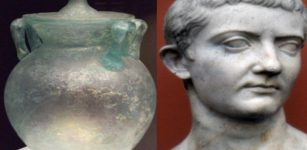 Flexible Glass – Lost Ancient Roman Invention Because Glassmaker Was Beheaded By Emperor Tiberius
Ancient Technology | Jul 27, 2023
Flexible Glass – Lost Ancient Roman Invention Because Glassmaker Was Beheaded By Emperor Tiberius
Ancient Technology | Jul 27, 2023 -
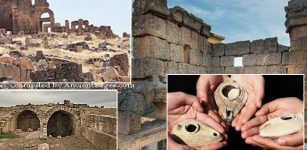 1,500-Year-Old Ancient Lamps Unearthed In Zerzevan Castle In Southeast Turkey
Archaeology | Nov 25, 2019
1,500-Year-Old Ancient Lamps Unearthed In Zerzevan Castle In Southeast Turkey
Archaeology | Nov 25, 2019 -
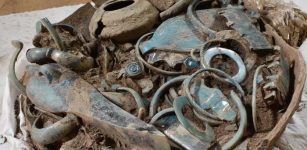 Hundreds Of Exceptional Bronze Age Artifacts Discovered In France Were Probably Offerings
Archaeology | Aug 28, 2021
Hundreds Of Exceptional Bronze Age Artifacts Discovered In France Were Probably Offerings
Archaeology | Aug 28, 2021 -
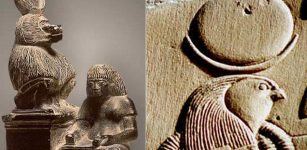 Full Moon In Ancient Myths And Legends Of Our Ancestors
Featured Stories | Nov 14, 2016
Full Moon In Ancient Myths And Legends Of Our Ancestors
Featured Stories | Nov 14, 2016 -
 Homo Bodoensis Is A New Species Of Human Ancestors Who Lived Half A Million Years Ago
Archaeology | Nov 1, 2021
Homo Bodoensis Is A New Species Of Human Ancestors Who Lived Half A Million Years Ago
Archaeology | Nov 1, 2021 -
 Machu Picchu Is Older Than Previously Thought – New Study Reveals
Archaeology | Aug 4, 2021
Machu Picchu Is Older Than Previously Thought – New Study Reveals
Archaeology | Aug 4, 2021 -
 Arrival Of A Mysterious Figure Triggers Unexplained Phenomena In Iceland – Strange Story From A Norse Saga
Featured Stories | Feb 16, 2025
Arrival Of A Mysterious Figure Triggers Unexplained Phenomena In Iceland – Strange Story From A Norse Saga
Featured Stories | Feb 16, 2025 -
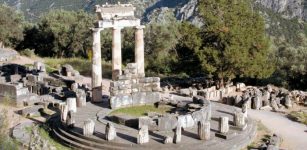 Ancient Greeks Built Sacred Temples On Earthquake Sites To Gain Spiritual Power
Archaeology | Sep 19, 2017
Ancient Greeks Built Sacred Temples On Earthquake Sites To Gain Spiritual Power
Archaeology | Sep 19, 2017 -
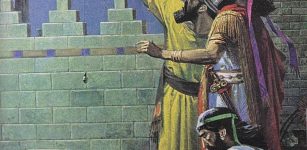 Babylonian Astronomers Used Geometry To Track Jupiter – 1,400 Years Before Europeans
Archaeology | Jan 28, 2016
Babylonian Astronomers Used Geometry To Track Jupiter – 1,400 Years Before Europeans
Archaeology | Jan 28, 2016 -
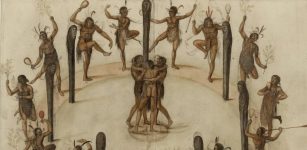 Archaeologists Have A Lot Of Dates Wrong For North American Indigenous History
Archaeology | May 4, 2020
Archaeologists Have A Lot Of Dates Wrong For North American Indigenous History
Archaeology | May 4, 2020 -
 Unique Ancient Half-Mummy Unearthed In Luxor, Egypt Mystifies Archaeologists
Archaeology | Jun 6, 2022
Unique Ancient Half-Mummy Unearthed In Luxor, Egypt Mystifies Archaeologists
Archaeology | Jun 6, 2022 -
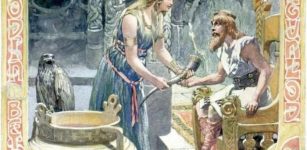 Death Of Kvasir And How Famous Mead Of Poetry Was Created, Stolen And Finally Recovered By Odin
Featured Stories | Apr 14, 2018
Death Of Kvasir And How Famous Mead Of Poetry Was Created, Stolen And Finally Recovered By Odin
Featured Stories | Apr 14, 2018 -
 Gold Coins Found In The Ancient City Of Notion Tell A Story Of Misfortune
Archaeology | Aug 9, 2024
Gold Coins Found In The Ancient City Of Notion Tell A Story Of Misfortune
Archaeology | Aug 9, 2024 -
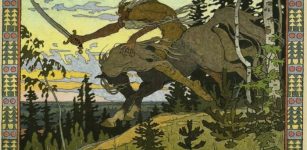 Koshchey ‘The Immortal’: Strong And Wise Ruler Of Darkness In Slavic Mythology
Featured Stories | Jul 3, 2016
Koshchey ‘The Immortal’: Strong And Wise Ruler Of Darkness In Slavic Mythology
Featured Stories | Jul 3, 2016 -
 Can Discovered Algonquian Artifacts Solve Mystery Of The Lost Colony On Roanoke Island?
Archaeology | May 13, 2024
Can Discovered Algonquian Artifacts Solve Mystery Of The Lost Colony On Roanoke Island?
Archaeology | May 13, 2024 -
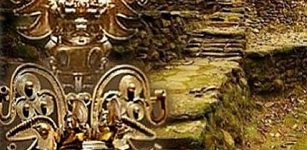 Mysterious Lost City Of The Tairona Hidden In The Jungles Of Colombia
Civilizations | Nov 9, 2018
Mysterious Lost City Of The Tairona Hidden In The Jungles Of Colombia
Civilizations | Nov 9, 2018 -
 1.2-Million-Year-Old Obsidian Axe Made By Unknown Human Species Discovered In Ethiopia
Archaeology | Jan 25, 2023
1.2-Million-Year-Old Obsidian Axe Made By Unknown Human Species Discovered In Ethiopia
Archaeology | Jan 25, 2023 -
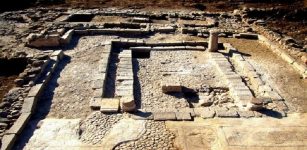 2,000-Year-Old Ruins In Mary Magdalene’s Town Of Magdala On The Shore Of The Sea Of Galilee
Biblical Mysteries | Dec 26, 2014
2,000-Year-Old Ruins In Mary Magdalene’s Town Of Magdala On The Shore Of The Sea Of Galilee
Biblical Mysteries | Dec 26, 2014 -
 North America Was Settled By Previously Unknown People – DNA From A 11,500-Year-Old Skeleton Reveals
Archaeology | Jan 3, 2018
North America Was Settled By Previously Unknown People – DNA From A 11,500-Year-Old Skeleton Reveals
Archaeology | Jan 3, 2018 -
 On This Day In History: Joan Of Arc Was Captured By The Burgundians – On May 23, 1430
News | May 23, 2016
On This Day In History: Joan Of Arc Was Captured By The Burgundians – On May 23, 1430
News | May 23, 2016


